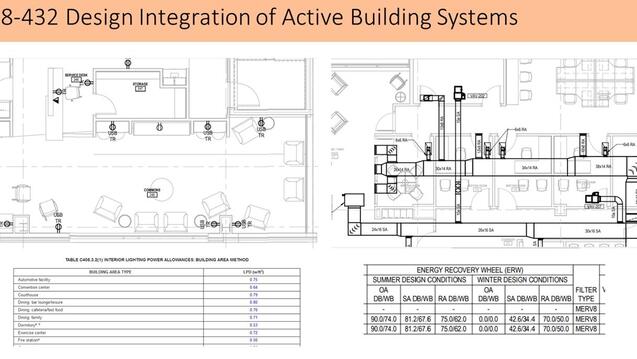This course introduces architectural design responses for energy conservation and natural conditioning, human comfort and the site-specific dynamics of climate.
Fulfills minor requirements for: Architectural Technology (non-majors)

Courses
Fall 2024
Image Credit: Louis Suarez, Kirman Hanson, Longney Luk, Colleen Duong, Tanvi Harkare
This studio is the capstone of a student’s undergraduate education and is an opportunity to integrate the various technical aspects of their professional degree to date.
This course focuses on active systems in commercial buildings and strategies for their successful integration with passive components.
Fulfills minor requirements for: Architectural Technology (non-majors)
Inside to outside and across a range of scales, the studio will collect data—empirically, experientially and theoretically—to generate propositions for guiding billions of birds safely around cities and buildings. Through an understanding of complex systems, designs will be data-driven and will explore how humans could adapt to live within the natural world without conflict.
This studio fosters knowledge built off of years of relationship building in Chiang Mai, Thailand using fieldwork, toys, comics, film and visual storytelling to explore citizen empowered design and the regenerative building practices of indigenous timber construction.
This studio challenges students to address the full range of complex and interrelated urban, architectural and infrastructure design issues of a new major intermodal transportation terminal combined with a large, dense mixed‐use program. Students explore structure, systems and building morphology on a grand scale, with major new program integrating with already vast existing buildings and systems.
This studio examines how we might { break down; undo; rethink; dismantle; discard } the { visions; systems; objects; infrastructures; landscapes; junk; detritus } of { smart; connected; intelligent } technology.
This seminar prepares undergraduate students planning to work on a thesis project in the following semester.
The course is organized as a graduate seminar that concludes the cycle of required courses in the history and theory of architecture for the M.Arch program. By revisiting histories of the twentieth and twenty-first centuries, it treats the profession as an uncertain, contested and contingent category.
This course aims to provide graduate students with a general introduction to different modes of conducting architectural research, while creating opportunities for cohort building, social exchange and skills development.










